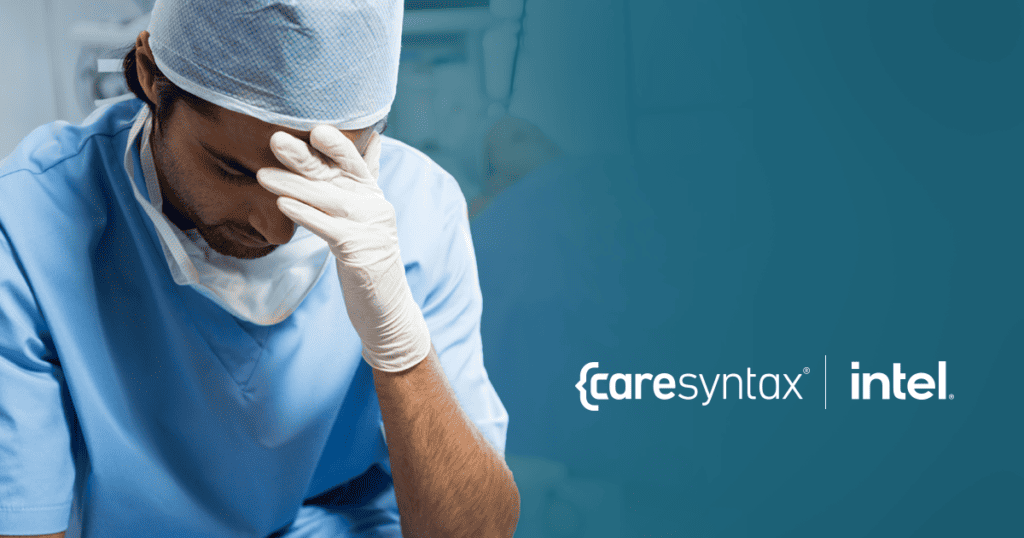
Podcast
The Process Breakdown: Aligning Your Team With Your Organization’s Core Values for Sustainable Growth
Read More

Caresyntax Blog
July 25, 2023
In recent years, there has been a growing trend of using video technology in surgical procedures to enhance precision, communication, and training. While the benefits of video in surgery are many, there are also concerns regarding the legal risks that may arise from its use. Medical professionals fear that video footage of a surgery could potentially be used against them in legal proceedings, with patients and their families scrutinizing every detail for evidence of malpractice or negligence. As a result, there is a need for clear guidelines and protocols around the use of video technology in surgery to protect the interests of both patients and medical professionals. Additionally, privacy concerns must also be taken into account to ensure that sensitive medical information is kept confidential and secure. Despite these challenges, the use of video technology in surgery continues to hold great promise for improving patient outcomes and advancing medical knowledge.
A recent OR Management News article, “Get Ready: Routine OR Video Recording Gaining Steam,” Surgeons, OR managers, and healthcare leaders want to know how video might be used in litigation and need clarification on ownership of surgical recordings. Is it the patient, the surgeon, or the hospital? Both patients and surgical teams have a right to ensure their privacy.
One common misconception about data privacy and the use of surgical video is the belief that the use of surgical video for process and safety improvement, medical education, and training is a violation of patient privacy; however, as long as the footage is de-identified to protect patient confidentiality, the use of surgical video for educational purposes is considered a valuable and ethical tool for improving surgical techniques and patient outcomes.
As long as the footage is de-identified to protect patient confidentiality, the use of surgical video for educational purposes is considered a valuable and ethical tool for improving surgical techniques and patient outcomes.
Organizations and vendors that collect surgical data are required to comply with multiple regulatory mandates for ensuring privacy, including HIPAA in the US and GDPR regulations in the EU.
Surgical intelligence software and video-based assessment tools can ensure de-identification of patient data on surgical video recordings. This ensures that all video, data, and key performance indicators are protected and confidential.
Vendors that offer surgical intelligence software and video-based assessment leverage multiple certifications to ensure de-identification of patient data on surgical video recordings. They ensure that all video, data, and key performance indicators are protected and confidential. This type of collection allows healthcare organizations to aggregate and collect new data sets to share greater data-driven insights into surgical performance.
| Certification Tools to Protect OR Video Data Privacy |
| AWS Cloud Platform |
| HIPAA (US) |
| GDPR (EU) |
| ISO 27001/27002 |
| HITRUST |
| AICPA SOC 2 Type I and II |
| NIST SP 800-53 (US) |
| NYDFS 23 NYCRR-500 (New York) |
When hosted on AWS, the Amazon Web Services cloud platform, data is monitored for compliance with HIPAA, ISO 27001, and ISO 27002. AWS network security also includes virtual private clouds, two-factor authentication, data encryption, and firewall protection.
Additional data security certifications covered under the AWS hosting model include the HITRUST control security framework (CSF); National Institute of Standards and Technology (NIST) SP 800-53; and for companies doing business in New York, compliance with NYDFS 23 NYCRR-500 State Cybersecurity Regulation.
An additional US-based certification offered under the AWS model—AICPA Systems and Organization Controls (SOC) 2 Type I and Type II certification—assures vendor clients that the organization has implemented a security framework policy that specifies how the company protects its customer data from unauthorized access, security incidents, and other vulnerabilities. Earning this certification provides yet another level of security by adhering to hospital Information Technology (IT) best practices.
Being listed as a Patient Safety Organization (PSO) in the United States with the Agency for Healthcare Research and Quality (AHRQ) provides significant value to healthcare organizations. (Not available to users in the EU.)
PSOs help healthcare providers to identify and address potential patient safety concerns by creating a culture of safety, promoting a learning and improvement environment, and analyzing data to identify trends and opportunities for improvement. By being listed as a PSO with AHRQ, healthcare organizations can benefit from legal protections that safeguard the confidentiality of patient safety data, which allows for more open and transparent discussions about patient safety incidents.
By being listed as a PSO with AHRQ, healthcare organizations can benefit from legal protections that safeguard the confidentiality of patient safety data.
Additionally, being a part of a national network of PSOs provides access to best practices and benchmarking opportunities, enhancing the ability of healthcare organizations to implement effective patient safety strategies. Ultimately, being listed as a PSO with AHRQ helps healthcare organizations to prioritize patient safety and improve the quality of care provided to patients.
“We help facilitate how hospitals protect surgical data collection from a qualitative point of view,” says Kingsley O’Kuesa, Caresyntax Global Director of Information Security. “We provide surgical video data and information not to monitor surgeons or to assign blame,” Kingsley explained. “It is to be used as a process for ensuring the right steps are being taken to ensure organizational quality and safety.”
Being a part of a national network of PSOs provides access to best practices and benchmarking opportunities, enhancing the ability of healthcare organizations to implement effective patient safety strategies.
Well-known experts acknowledge the value of leveraging surgical video to improve quality and patient safety. Dr. Gideon Sroka, MD, B’nai Zion Medical Center Haifa Israel, predicts, “Video recording should be seen as an integral to the quality improvement process in hospitals.” and Oliver Varban, MD associate professor of surgery at the University of Michigan Medical School believes OR video will have a profound impact on outcomes: “[OR video recording is] “a potential data gold mine for quality initiatives.”
As more and more organizations look to leveraging data to improve safety and quality, surgical data platform vendors, like Caresyntax, that are listed as a surgical PSO have the unique ability to ensure your OR video data security.
If you would like additional information about Caresyntax’s status as a PSO, visit our Patient Safety Organization (PSO) web page.
Sources:
[i] Frangou, Christina. “Get Ready: Routine OR Video Recording Gaining Steam” OR Management News Vol 7. 19 Dec 2022. https://www.ormanagement.net/Feature/Article/12-22/Routine-OR-Video-Recording-Gaining-Steam/68845
[ii] Frangou, Christina. “Get Ready: Routine OR Video Recording Gaining Steam” OR Management News Vol 7. 19 Dec 2022. https://www.ormanagement.net/Feature/Article/12-22/Routine-OR-Video-Recording-Gaining-Steam/68845

Podcast
Read More

Blog
Learn More

White Paper
Read More